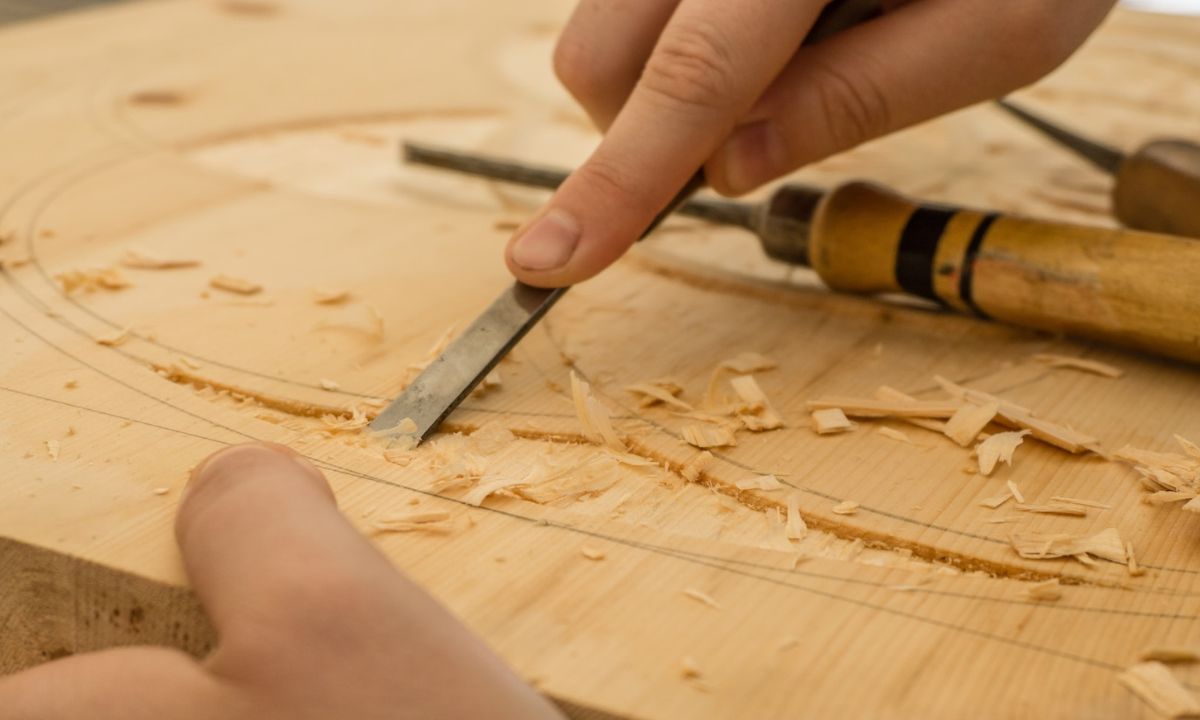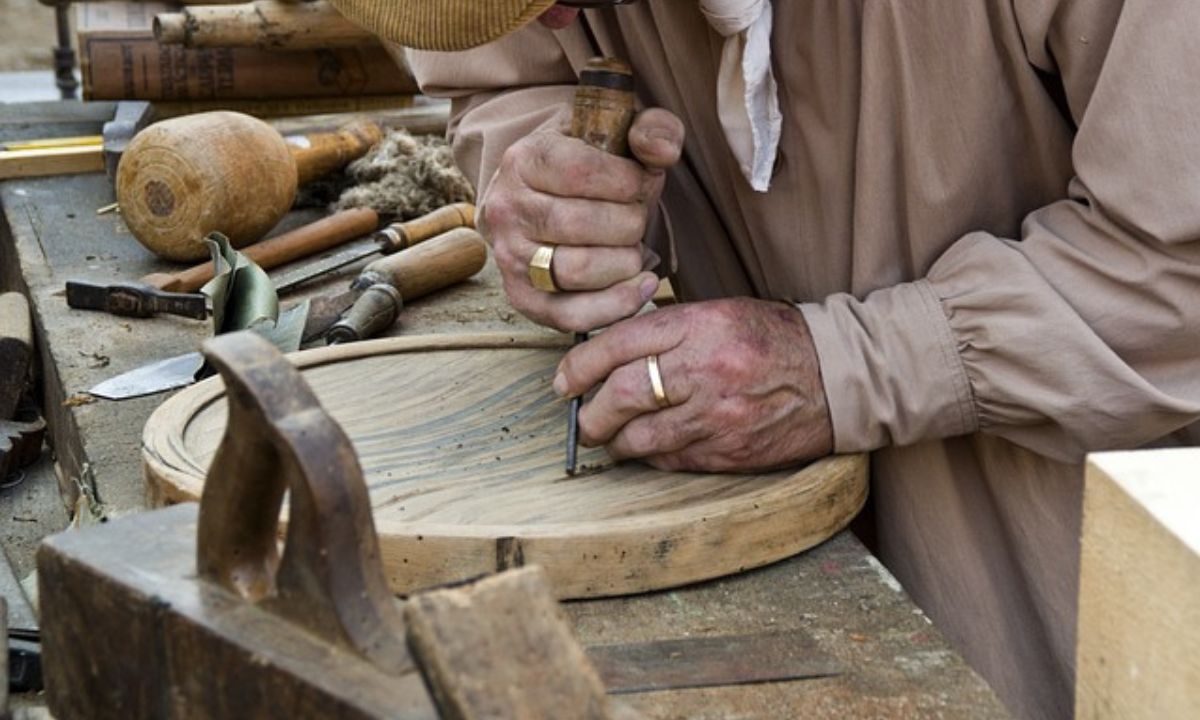Woodworking Joinery Techniques: Creating Strong and Beautiful Connections
Woodworking has been an ancient form of craftsmanship made with creativity, precision, and skill. Being amateur or professional, the following ways of how woodworking joinery techniques may lead to making sturdy, functional projects that are beautiful too. From a simple butt joint, an intricate one is a dovetail—how one secures pieces of wood together will make or break a project.
This article reviews some of the common jointing methods and provides several uses of the common types and great ways of perfecting the technique. Further in the article, we introduce one fine resource to enhance one’s skill regarding woodwork; consider reading about the best woodworking guide to help in nurturing such projects.
Take Your Woodworking to the Next Level! Build 16,000 Woodworking Projects With Step-By-Step Plans
Why Joinery Matters in Woodwork
Joinery is the backbone of any woodworking. It is a method of joining two or more pieces of wood together to hold something stable, for durability, and for beauty. Bad joinery makes for weak structures, whereas good joints can enhance strength and beauty in your work. Be it furniture, cabinets, or decorative items, mastering the techniques of joinery is an absolute must for any woodworker.
Common Woodworking Joinery Techniques

1. Butt Joint
The butt joint is the most basic and simple joint in this category of joinery. It basically joins two pieces of wood together by butting them and simply securing them with nails, screws, or glue. Although simple to make, butt joints are not strong and therefore should be used on projects where strength is not the main concern, like picture frames or simple boxes.
Tip: Add corner blocks or dowels for extra reinforcement to the butt joints.
2. Miter Joint
The miter joint is like the butt joint, but in this, both pieces are at 45-degree angles and come together nice and neat to create a seamless corner. Mitering joints share common applications like picture frames, moldings, and ornamental trims. Miter joints do look nice but have a tendency of being weak unless supported right.
Tip: Be accurate with a miter saw and add some splines or biscuits to hold these woods together.
3. Dovetail Joint
Dovetail joints are strong and attractive. In this process, there are some interlocking trapezoidal pins and tails that make the joints resistant to pull in the opposite direction of one another. Dovetails are used in drawers and high-quality furniture.
Dovetail can be hand-cut or cut with a dovetail jig for perfectly uniform ones. A general how-to on mastering the skill follows below.
4. Mortise and Tenon Joint
The most general and long-standing joinery, which usually features mortise and tenon, consists of some joinery techniques. The tenon basically refers to that part of wood that sticks out to fit its corresponding hole, known as a mortise. The application of mortise and tenon joint find scope in furniture pieces, more particularly, table legs, and chair frames.
Tips: The fitting of mortise and tenon could be perfect if proper measurement and chiseling is made on both the pieces.
5. Dado Joint
A dado joint simply means a cut in one piece of wood into which the other piece fits nicely. This joining method is very frequent in shelving and cabinetry. Dado joints are very supportive and aren’t that complicated to make when using either of the tools—a table saw or router.
Hint: Make neat, exact cuts with a dado blade.
6. Box Joint
Box joints: Interlocking rectangular “fingers” are cut into the ends of two pieces of wood. The joint is strong and can always be applied the same in box making or for corners in drawer construction.
Tips: A table saw or router jig will make uniform fingers to provide a proper fit.
7. Biscuit Joint
In biscuit joinery, small oval-shaped biscuits of wood are inserted into slots cut into the pieces of wood. The biscuits swell when glued, making for a tight joint. This is quite suitable for the alignment and joining of panels, like tabletops.
Tips: For appropriate placement of the slots, use a biscuit joiner.
8. Pocket Hole Joint
Pocket hole joinery: this is a hole drilled at an angle in one of the woods to be screwed into the other. Quicker, simpler, and best for most general cabinet and framing work.
Tips: To get professional results with consistency in pocket hole joinery, use a pocket hole jig.
Build 16,000 Woodworking Projects With Step-By-Step Plans
How to Choose the Right Joinery Technique
The style of joinery you’d use would be dependent on its intended purpose, the species of the wood, and the skill involved. Dovetail joints are good for decorative boxes, while mortise and tenon joints work better for load-bearing furniture. Consult a good woodworking guide should you be torn between which one to use.
Tips for Mastering Woodworking Joinery

The golden rule in joinery is to measure twice, cut once. Always double-check your measurements before any cuts.
Use sharp tools: A blunt blade or chisel will only result in uneven cuts and a load of frustration. Keep your tools sharp for clean, accurate work.
Practice makes perfect: Joinery can be a little fiddly for a lot of first-timers; do not be afraid to practice on some scrap wood before attempting your actual projects.
Invest in Quality Tools: Good tools bring a lot of difference to the result of your joinery—invest in a good saw, a chisel set, and measuring tools.
Learn from Masters: Woodworking has always got something or other to learn. Go through tutorials, books, and other online resources for knowledge enhancement. The detailed guide can be viewed at this link.
Joinery and the Aesthetics of Woodworking
While joinery is first and foremost functional, it’s also majorly aesthetic to your project. Visible joints—dovetail or box joints—are that touch of craftsmanship and elegance to your work. On the other hand, hidden joints like pocket holes or biscuits are clean and seamless in their look. Exposed versus hidden joinery becomes an issue based on design consideration or requirements for a particular job.
Advanced Joinery Techniques
Once the above has been mastered, the following are examples of more advanced techniques to move onto, including:
- Through Tenon: A mortise and tenon joint in which the tenon completely passes through the mortise. These are quite common in traditional timber framing.
- Half-Blind Dovetail: Dovetail tails which are invisible on one side of the work; these are extremely common on drawer fronts.
- Scarf Joint: The joint used to join two pieces of wood end to end, usually employed in woodworking and boat building.
These above techniques require patience and practice for perfect implementation but can really make your projects professional. Detailed instructions and tips can be seen in this woodworking guide.
Build 16,000 Woodworking Projects With Step-By-Step Plans
Common Joinery Mistakes to Avoid
Even expert craftsmen commit mistakes regarding joinery. Here are some of the most common pitfalls to avoid:
- Incorrect Measurement: A slight mistake in measurement and the joints don’t fit.
- Rushing the Process: Joinery is a job that really demands a lot of patience. Give time for each cut so it can be accurate.
- Wrong Technique Applied: Not all joints are created equal. Employ the right technique for what your project needs.
- Wood Grain Orientation Ignored: Orientation of wood grain affects both strength and appearance of a joint. Always think about grain orientation when cutting and assembling.
Improving Your Joinery
If you are one of those serious about how to improve your joinery ability in woodworking, then you may want to invest in a comprehensive resource covering everything from the basic to the advanced techniques. This guide in woodworking will take you through step-by-step instructions, tips, and tricks in mastering joinery.
Conclusion
The various methods of joinery are actually the backbone of any successful woodworking project. Other than simple shelving, very intricate furniture also requires the right joinery to make all the difference. Learn about the methods, make regular practice, and learn from masters—the outcome will be strong, beautiful, and long-lasting woodworking projects. Check this comprehensive guide on woodworking for a deeper understanding and take inspiration. Happy woodworking!
Take Your Woodworking to the Next Level! Build 16,000 Woodworking Projects With Step-By-Step Plans
Related Reviews:
Can You Make Money Selling Woodworking Projects?
What Woodworking Project is Most Profitable?
How to Make Money Fast with Woodworking?
What is the Highest Paid Woodworker?
Is Woodworking a Good Business to Start
What is the Best Platform to Sell Woodworking Projects?
How to Sell Wooden Items Online?
Woodworking Related Topics And Tags: Woodworking Joinery Techniques, Woodworking Joinery, Woodworking Techniques, Dovetail Joints, Mortise and Tenon, Woodworking Tips, DIY Woodworking, Woodworking Projects, Carpentry Skills, Woodworking Tools, Furniture Making, Woodworking for Beginners, Advanced Joinery, Woodworking Guide, Handcrafted Furniture, Woodworking Aesthetics
